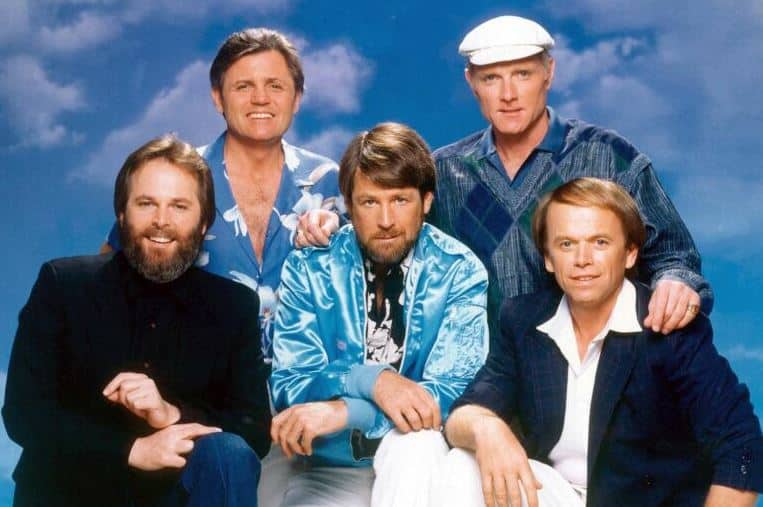The song “Kokomo” by The Beach Boys stands as a quintessential emblem of late 1980s pop culture, blending the iconic harmonies of the band with a vibrant tropical aesthetic that captured the imagination of listeners worldwide. Released in July 1988, “Kokomo” marked a triumphant resurgence for the Beach Boys, achieving number one on the Billboard Hot 100 and solidifying their enduring influence on the landscape of American music. This track is not just a song—it is a cultural artifact, embodying a blend of escapism, nostalgia, and musical craftsmanship that continues to resonate decades after its release.
Origins and Songwriting of “Kokomo”
The creation of “Kokomo” is a collaboration between John Phillips, Scott McKenzie, Mike Love, and Terry Melcher. Each contributor brought a unique perspective, merging lyrical storytelling with melodic ingenuity to craft a song that evokes the serene imagery of a tropical paradise. The songwriting process was meticulous, focusing on crafting catchy hooks, lyrical simplicity, and an atmosphere that transports listeners to sun-drenched islands.
The lyrics of “Kokomo” reference idyllic Caribbean locations such as Aruba, Jamaica, Bermuda, and Key Largo, creating a sense of wanderlust and escapism. This deliberate focus on exotic destinations allowed the song to resonate with a global audience, offering a musical retreat from the everyday pressures of life.
Production Excellence and Studio Craftsmanship
Recorded in early 1988 in Los Angeles, “Kokomo” benefited from the production expertise of Terry Melcher, whose ability to blend traditional instrumentation with contemporary studio technology was pivotal in achieving the song’s signature sound. The recording lineup included Mike Love, Al Jardine, Bruce Johnston, and Carl Wilson, with Brian Wilson notably absent from the sessions. Despite his absence, the band’s trademark harmonies remained intact, enhanced by Melcher’s polished arrangement.
Instrumentation played a critical role in defining the song’s tropical character. The track prominently features steel drums, ukulele, and synthesized percussion, which combine to create a breezy, beach-inspired soundscape. The use of these instruments was not merely decorative—it was intentional, designed to immerse the listener in the warmth and relaxation of island life. Additionally, subtle background effects, including gentle ocean sounds and atmospheric reverb, further enhance the escapist quality of the music.
Cultural and Commercial Impact
“Kokomo” became an instant cultural phenomenon upon its release, propelled in part by its inclusion on the soundtrack of the film Cocktail. The movie, starring Tom Cruise, offered a visual complement to the song, amplifying its themes of romance, leisure, and tropical adventure. The synergy between the film and the track helped “Kokomo” achieve mainstream popularity rapidly, reaching audiences who may not have been regular Beach Boys fans.
Despite mixed critical reception—some critics dismissed the song as lightweight or overly commercial—audiences embraced it wholeheartedly. Its appeal lay in its ability to deliver joyful escapism and optimism during a period marked by social and economic uncertainty. Over time, “Kokomo” has become a staple on classic pop and adult contemporary playlists, demonstrating that commercial success and enduring cultural relevance are not mutually exclusive.
Legacy and the Beach Boys’ Final Top-40 Triumph
“Kokomo” holds a unique place in the Beach Boys’ discography as their final top-40 hit, a milestone that underscores the song’s historical significance. Beyond chart performance, the track reinvigorated interest in the band’s classic sound, encouraging renewed touring efforts and engaging a new generation of fans.
The accompanying music video further cemented the song’s legacy. Featuring picturesque beach scenes and casual performances by the band, the video emphasized the tropical paradise motif, visually reinforcing the song’s lyrical themes. This multimedia approach ensured that “Kokomo” was not merely a hit on the radio—it became a complete sensory experience, associating the Beach Boys with leisure, beauty, and effortless charm.
Musical Structure and Vocal Harmony
A deeper examination of “Kokomo” reveals sophisticated musical craftsmanship that belies its seemingly simple composition. The song is structured around lush vocal harmonies, a hallmark of the Beach Boys’ signature sound, supported by a gentle four-chord progression that underpins the melody. Mike Love’s lead vocals deliver the lyrics with warmth and sincerity, while the harmonized backing vocals from Al Jardine, Bruce Johnston, and Carl Wilson add depth and texture, creating a rich, full-bodied sound.
The interplay between melodic simplicity and harmonic complexity allows the song to appeal to a wide audience, from casual listeners who enjoy the catchy chorus to music enthusiasts who appreciate the intricate layering of voices and instruments.
Enduring Popularity in Modern Media
Decades after its release, “Kokomo” continues to enjoy a prominent presence in popular culture. It is frequently featured in commercials, television programs, and playlists aimed at evoking a sense of leisure and tropical escape. Streaming platforms consistently report high play counts for the track, highlighting its timeless appeal and cross-generational reach.
The song’s continued relevance is also evident in cover versions and reinterpretations by contemporary artists, further demonstrating that “Kokomo” transcends its original era. It is a testament to the Beach Boys’ ability to craft music that remains culturally significant and emotionally resonant.
Conclusion: “Kokomo” as a Cultural Touchstone
“Kokomo by The Beach Boys” is far more than a simple pop song; it is a cultural touchstone that encapsulates the band’s musical legacy, the allure of tropical escapism, and the enduring power of harmonious craftsmanship. From its carefully constructed lyrics and lush instrumentation to its commercial success and ongoing cultural impact, “Kokomo” exemplifies the perfect union of artistry and mass appeal.
For anyone seeking a musical journey to sun-soaked beaches and idyllic islands, “Kokomo” remains the ultimate soundtrack, a timeless piece that continues to evoke joy, relaxation, and a longing for paradise. The Beach Boys, through this song, remind listeners that music can transport, uplift, and define an era—and in the case of “Kokomo,” it does so with effortless charm and lasting resonance.
